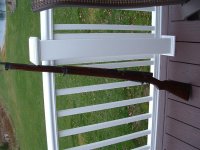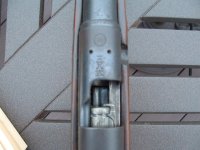THE PILGRIM
Member
I have seen a few of these rifles but never thought much about them.
So my Son says his Buddy has a T 38 Rifle, it’s a 6.5 mm.
So I ask, is it a Japanese 6.5 x 50 mm Arisaka?
He checks, texts me yes.
When I refreashed myself on this piece, I was amazed at what I didn’t know.
Like - Do you remember the ditty about why the Fire Engine is Red?
The Finns fought the Russians?
Some of the Finns used Type 38s that they liberated from the Russians!
The Russians bought a bunch of Type 38s!
The Brits and Estonians bought them in 303 British.
The Thais bought a variant. But I knew that.
And there a number of other sales.
The Type 38 buy that floored me?
Mexico. They bought theirs in 7 x 57!
So my Son says his Buddy has a T 38 Rifle, it’s a 6.5 mm.
So I ask, is it a Japanese 6.5 x 50 mm Arisaka?
He checks, texts me yes.
When I refreashed myself on this piece, I was amazed at what I didn’t know.
Like - Do you remember the ditty about why the Fire Engine is Red?
The Finns fought the Russians?
Some of the Finns used Type 38s that they liberated from the Russians!
The Russians bought a bunch of Type 38s!
The Brits and Estonians bought them in 303 British.
The Thais bought a variant. But I knew that.
And there a number of other sales.
The Type 38 buy that floored me?
Mexico. They bought theirs in 7 x 57!
Last edited:



